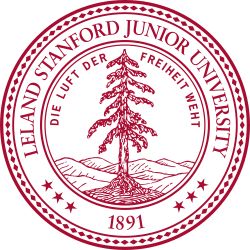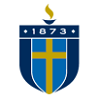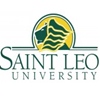Introduction and Overview
The College of Wooster is located in Wooster, Ohio, USA. It is a private liberal arts college with a long history, offering four-year undergraduate degree programs. There are about 1,967 students on campus (fall 2022), of which 10% are international students. The total number of teachers is 171, with a student-teacher ratio of 1:12. The class size is small, and 70% of the courses have fewer than 20 students.
History and Founding Time
The school was founded in 1866 by the Presbyterian Church and opened on September 8, 1870 as the University of Wooster, with 5 teachers and 34 students. In 1915, the school had multiple graduate departments, including a medical school, but later the board of directors and most of the faculty voted to discontinue existing graduate programs, focus on undergraduate liberal arts education, and changed its name to the College of Wooster. In 1969, the Ohio Presbyterian Church gave up ownership of the college, and the College of Wooster became an independent private liberal arts college.
School Strength
Faculty: 96% of full-time teachers have a doctorate or equivalent terminal degree. The teachers not only have a solid academic background, but also focus on personalized guidance and training for students. The teacher-student ratio is 1:12, which can provide close academic guidance and support for students.
Academic achievements: Excellent graduates have been trained in many fields such as liberal arts, science, and social sciences. Their graduates have certain competitiveness in the job market and further studies, and have provided a large number of talents for the society.
Research level: It is well-known for its unique "self-study" program. It has carried out influential research projects in some disciplines, such as biochemistry and molecular biology, neuroscience, etc. Students have the opportunity to participate in research and present their results at academic conferences.
Institutional nature
Private liberal arts college.
Educational philosophy
Emphasis on improving students' comprehensive quality through practical learning and interdisciplinary research, focusing on cultivating students' initiative, collaboration, self-confidence, independent judgment, creative problem-solving ability, and good written and oral communication skills, and encouraging students to actively participate in community service and social practice to achieve the unity of personal growth and social values.
Key laboratories and disciplines
Key disciplines: Social sciences, psychology, philosophy and religion, English, physical sciences, visual and performing arts, biology, communications/journalism and other majors have certain characteristics and advantages. Students majoring in biochemistry and molecular biology have the opportunity to receive undergraduate research scholarships.
Key laboratories and research centers: No particularly prominent key laboratories have been found in public information, but the school has corresponding research facilities and academic resources in various disciplines to support teaching and research.
Departments
The school does not clearly divide departments, but provides more than 50 academic programs covering humanities, social sciences, natural sciences, arts and other fields for students to choose from.
Rankings
In the 2024 Best Colleges Rankings of U.S. News & World Report, the College of Wooster ranked 75th among national liberal arts colleges, 57th among best value schools, and 20th (tied) in the best undergraduate teaching.
Expenses
For the 2023-2024 academic year, tuition and fees are $59,550, and room and board are $14,000. The school offers an average need-based financial aid package of $54,434.
Campus Environment
Campus Facilities: The 240-acre campus has an extraordinary forest donation area. The campus is surrounded by a thriving ancient oak forest and dotted with beige collegiate Gothic buildings. The school has an art museum that houses artifacts and artworks from different eras, including an ancient Egyptian mummy. In addition, there are various modern teaching facilities and comfortable living facilities, such as teaching buildings, libraries, laboratories, dormitories, restaurants, etc.
Campus Culture: With a strong academic atmosphere and rich cultural activities, it is a vibrant, diverse and simple learning community. Students can participate in various clubs, art performances, sports events, etc. to enrich their extracurricular life, make friends, and cultivate teamwork spirit and leadership skills.
-

Harvard University
-

Massachusetts Institute of Technology
-

South University
-

University of West Georgia
-

Stanford University
-

Northwest Nazarene University
-

Hawaii Pacific University
-

Shorter University
-

Nova Southeastern University
-

Saint Leo University
-

Mesoamerican University
-

Istmo University
-

Mariano Galvez University of Guatemala
-

Regional University of Guatemala
-

Galileo University
-

Francisco Marroquín University
-

Rafael Landívar University
-

University of the Valley of Guatemala
-

University of San Carlos of Guatemala
-

Technological Institute of Tlaxcala Plateau
-

Golfo University
-

Technological University of South Sonora
-

Technological University of Huejotzingo
-

Tizimín Institute of Technology
-

Chilpancingo Institute of Technology

